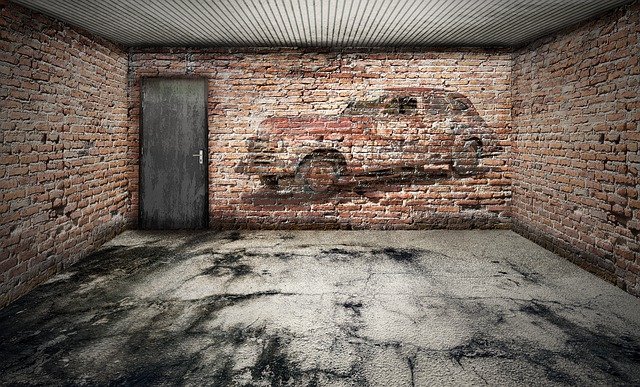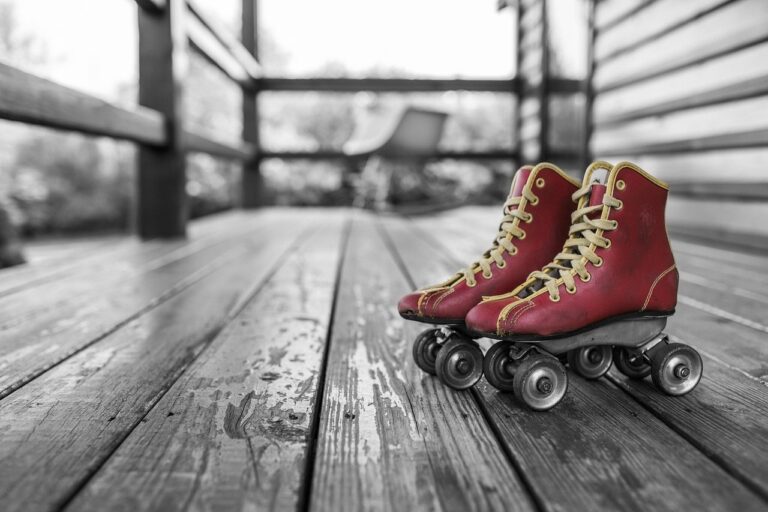How to Clean Dried Latex Paint from Paint Sprayer
When the latex paint sprayer is stored without cleaning, the paint dries and clogs the channels. Dried paint affects the performance of the paint sprayer and may even cause a complete breakdown if not removed. Could you be having similar problems? 
Well, in this article, I will be discussing how to clean dried latex paint from a paint sprayer. To begin, select required tools and material, unscrew and dismantle the sprayer, carefully clean the filters and nozzle, and flush clean water through the sprayer to thin and quench dried paint.
Further, clean the tips, gun, and the hosepipe, prime the sprayer with water once more, clean inlet pick-up/strainer carefully, mop and rinse the sprayer to dryness, assemble the sprayer and store it in a cool dry place.
Details: How to Clean Dried Latex Paint from Paint Sprayer (Fast)
During the cleaning process, it is advisable to wear safety gear (for personal protection) and stick to precautions given when handling the sprayer to prevent any damage or wrong cleaning approach. The material and tools required are:
- A pair of boots and hosepipe
- Blower and Water point
- Paintbrush and Hand Gloves
- Empty Paint bucket and eye goggles
- Tack cloth and a piece of cloth or rag
- Rinse bottle and Dust Coat
- Respirator and Toolbox – if needed
- Face mask and paint scrapper
- Power source and waste bucket
- Paint sprayer
Step 1: Unscrew and Dismantle the Mantle
When dismantling your sprayer, be careful not to damage the fastening mechanism used. Some sprayer sections are only latched, while others are screwed – check the user manual for further instructions.
- Wear protective gear – respirator, boots, gloves, and dustcoat
- Using pliers or spanner, dismantle the paint sprayer
- Remove the spray gun, the hosepipe, tips, strainers, canister, and pressure gauge
Step 2: Clean the Filters and Nozzle
Spray filters are very sensitive and should be handled with care to prevent damage – avoid using excessive abrasive force when cleaning.
- Put clean water into a bucket
- Add soapy detergent and stir to foam sufficiently
- Dip and soak the filters and nozzle in the soapy liquid
- Leave the filters and nozzle for about 30 minutes to cure
- Using a soft blister paintbrush, clean the filters and nozzle – scrub gently
- Further, wash the filters with a sponge for finer details
- Rinse the filters and nozzle with clean water and place them in a cool place to dry
See Also: Latex Vs Acrylic Paint
Step 3: Flush Clean Water through the Sprayer
- Fill an empty bucket with clean water
- Add a little detergent (thinner) and stir to foam sufficiently
- Flush water through the sprayer to quench/cure dried latex paint
- Dip the sprayer gun into the soap liquid and lift gently to run the liquid through the channels sufficiently
- Leave the sprayer to cure for 20 minutes or otherwise advised by the manufacturer
- Pour the soapy fluid to remove quenched latex paint and flush more soapy water
NB: The soapy water should be left within the sprayer channels to quicken the thinning process.
Step 4: Clean the Tip, Gun, and Hose
- Dip spray tips and gun into soapy liquid and leave them for 20 minutes to thin sufficiently
- Using a soft blister brush, clean the spray tip gently
- Scrub the tip orifice to remove interior clogging and paint blockage. However, you must be careful not to expand the internal orifice diameter
- Using the thread brush, clean the sprayer gun’s interior channel. Gently, unblock the quenched paint and flush water through the channel
- Adjust the gun width and clean the interlocking selections too
- Rinse the tips and gun, and place them somewhere to dry naturally
- Dip the hosepipe in a soapy bucket and flush water through it to remove stuck paint
- Rinse the hosepipe with clean water – you can connect the hosepipe to the water point if the diameter is compatible
See Also: Removing Latex Paint from Metal
Step 5: Prime the Sprayer with Water Thinner
- Prime the sprayer parts with water once more to quench the dried paint that remained
- Alternatively, use commercial water thinner for latex paint – add to clean water
- Clean the canister and paint cup with a soft paintbrush – scrub gently
- Finally, rinse the parts with clean water
Step 6: Clean Inlet Pick-up/Strainer
- Using clean soapy water, thin the inlet strainer
- Wash the inlet strainer with a sponge or a soft paintbrush
- Remove stuck debris and blocked paint stain
- You can choose to remove the strainer and clean it separately if possible
- Rinse the inlet strainer with clean water and leave it to dry
Step 7: Wipe and Rinse the Sprayer to Dryness
- Using a piece of cloth, wash the external spray parts
- Rinse the parts with clean water – using the sponge or dry piece of cloth
- Leave the sprayer to dry naturally
Step 8: Assemble the Paint Sprayer and Store
- Upon drying, assemble the sprayer parts accordingly
- Fix the gun, tips, and nozzle in place
- Pack and store the paint sprayer in a cool dry place
NB: In case your store is near a dusty environment, consider packing the paint sprayer in a polyethylene bag.
Problems of Using Uncleaned Paint Sprayer
It’s not advisable to use a paint sprayer that is not previously cleaned as it may lead to some of the following problems:
1. Low-Quality Paint Finish
Uncleaned paint sprayer delivers low-quality finish coat – the paint stickiness is affected by internal blockage or narrowing of sprayer’s tips by the dried latex paint.
Moreover, the paint is incompletely atomized and ends up forming an uneven paint layer. Clogged paint sprayer impends the paint flowability and causes internal strain that affects final paint delivery.
See Also: HVLP Paint Sprayer for Latex Paint
2. Incomplete Atomization
Incomplete atomization is caused by the clogging of the sprayer’s channels or the narrowing of the nozzle or spray tips. The paint molecules fail to attain atomization point thus leading to raw paint coating during paint spraying.
Internally dried paint impends paint flow and blocks atomized paint from reaching the surface under paint application – the paint gets stuck at the tip thus blocking the entire flow.
3. Internal Clogging/Blockage
Dried paint blocks and clogs the intake pipe, gun, and flow channel. The subsequent spray application is highly affected and the gun performance is lower. Internal paint strain causes paint gun fatigue and may cause trigger breakdown.
Moreover, dried paint impends paint flowability from the canister to the gun channel. Indeed, self-thinning of paint under application is inhibited thus affecting the quality of the finish layer. Importantly, dried paint affects spray tip diameter due to excess abrasive forces from solid paint.
4. Reduced Sprayer’s Service life
Dried paint causes internal blockage and channel clogging, which leads to sprayer fatigue during paint application.
The paint gun wears due to excess abrasive force and filter tear often thus reducing the entire service life. The inlet strainer is also clogged by dried paint limiting paint intake and overall performance.
See Also: Removing Latex Paint from Concrete
5. Nozzle or tip Damage
The sprayer’s nozzle is blocked by dried paint while the tip is often eroded by the solid paint particle as forced spray painting is undertaken – increased tip diameter leads to surface overspray.
In addition, continuous strained spray application damages the nozzle and wears the tip’s O-ring, which kills the sprayer’s overall performance.
6. Frequent Repair and High Maintenance Cost
With internal blockage and channel clogging, some sprayer parts like filters and tips fail too. Repair and part replacement are done frequently, which raises maintenance costs.
Moreover, metallic spray guns may rust and fail eventually due to continuous internal fatigue initiated by internal paint strains. Importantly, the running cost of the sprayer increases with time due to high energy uptake.
See Also: Thin Acrylic Paint (Acrylics Paint)
Precautions When Cleaning Dried Latex Paint for Paint Sprayer
When cleaning dried latex paint from a paint sprayer, stick to the following precautions:
- Never remove dried paint from your paint sprayer before thinning is done
- Always dismantle the paint sprayer when cleaning
- Never assemble your paint sprayer before it’s dried to touch
- When dismantling your paint sprayer, always follow the manufacturer’s instruction
- Be careful when handling/cleaning the filters and tips to prevent damage
- In case you are new to paint sprayers, contract a professional sprayer cleaner to help you in the quality cleaning process.
- During the cleaning process, always wear protective gear for your own personal protection
- Avoid storing your paint sprayer in a dusty environment – dust accelerates aging and reduces overall performance.
- Importantly, thin dried latex paint sufficiently before you commence the cleaning process and use a soft blister brush for scrubbing.
Conclusion
In conclusion, on how to clean dried latex paint from a paint sprayer, you begin by selecting the required tools and material, unscrew and dismantle the sprayer, carefully clean the filters and nozzle, and flush clean water through the sprayer to thin and quench dried paint.
Besides, clean the tips, gun, and the hosepipe, prime the sprayer with water once more, clean the inlet pick-up/strainer carefully, mop and rinse the sprayer to dryness, assemble the sprayer and store it in a cool dry place.
It’s advisable to put on protective gear (for personal protection) when cleaning latex paint and observe precautions given while handling the paint sprayer to prevent any damage. If you are new to a paint sprayer, contract a professional to help you in cleaning.





